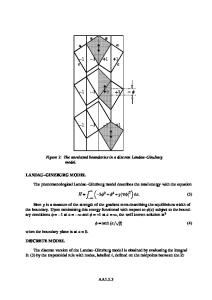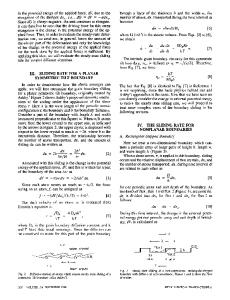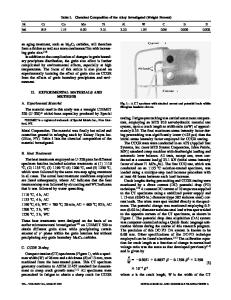Computer simulation of morphological changes of grain boundary precipitates growing by the ledge mechanism
- PDF / 1,443,460 Bytes
- 11 Pages / 597 x 774 pts Page_size
- 67 Downloads / 327 Views
INTRODUCTION
T H E morphology of precipitates varies remarkably with alloy system, alloy composition, and transformation temperature. Particularly in hypoeutectoid steels, the occurrence of two major morphologies in the proeutectoid ferrite reaction, i.e., grain boundary allotriomorphs at low undercoolings and (primary or secondary) Widmanst~itten sideplates at larger undercoolings, has drawn much attention. This is, in part, because the control of these morphologies may bring about various industrial benefits. Among numerous efforts [1-5j made to understand the formation of these morphologies, Townsend and Kirkaldy[3] attempted to explain the various characteristics of sideplate formation, such as the interplate spacing and the growth rate, etc., from the perturbation theory proposed by Mullins and Sekerka (M-S), [6J noting the apparently cooperative nature of the growth of secondary sideplates. Several other investigations, experimental and theoretical, were conducted on related topics which include the grain size dependence of the Widmanst~itten start temperature (W,),/4] the effect of substitutional alloying element upon W,, ]51 and the examination of the assumptions of the M-S theory.iT] In hypoeutectoid titanium alloys, Widmanst~tten plate morphology is much more predominant over that of grain boundary allotriomorphs in the proeutectoid a reaction than in steels. Recently, an attempt was made to understand the formation of plate morphology along the same lines as in steels. Is] Not only in these alloys [9,1~ but also in other nonferrous alloys,['l'12'13]there are many observations which indicate that the interfaces between the precipitate and the matrix are principally semicoherent and the growth of
MASATO ENOMOTO, Senior Researcher, is with the Materials Physics Division, National Research Institute for Metals, 2-3-12, Nakameguro, Meguro-ku, Tokyo 153, Japan. This paper is based on a presentation made in the symposium "The Role of Ledges in Phase Transformations" presented as part of the 1989 Fall Meeting of TMS-MSD, October 1-5, 1989, in Indianapolis, IN, under the auspices of the Phase Transformations Committee of the Materials Science Division, ASM INTERNATIONAL. METALLURGICAL TRANSACTIONS A
such precipitates occurs by the ledge mechanism. In previous papers, t14,15J a f'mite difference computer model was developed to simulate the motion of steps in various configurations, e.g., an infmitely long train of equally spaced steps t14j and a train of a finite number of steps of arbitrary heights and spacings, t15j In these cases, steps were all assumed to preexist. In this paper, a computer model which involves step nucleation is developed by modifying the previous model for a finite train of steps, tlSj Under the supposition that steps are nucleated at grain boundaries, the model will closely approximate the growth of grain boundary precipitates. The growth kinetics and the change of the precipitate shape with the reaction time and with the amount of undercooling are investigated through varying the time s
Data Loading...











